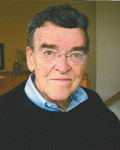November 2, 2017
Max’s Musings
 By Max Molleston
By Max Molleston
It was a dangerous adventure for two civilizations, Indians and the “white man’’ running on active and inactive for a couple centuries, the eighteenth and nineteenth. Government activities inside the drive to couple the east with the new U.S. west, via an intercontinental railroad, wasted centuries native populations had known of their history. The general purpose of this column has been poets and poetry over the years. Let you and me move into a small exploration of Indian language and how it has been translated, then formed into the English language to lay out its beauty. It was also translated into German language. These peoples, the Germanic lot, held a fascination for the North American Indian. Scholars and others attracted with such a task translated and related oral expressons into lines resembling poems, lined out as is a tradition. Where “line breaks” belong, is a keystone of argument(s), a major concept in forming a poem. Emotional emphasis of the storyteller must match and be as authentic as possible. In the northern reaches of America The Lakotas were dominate. Parts of that allegiance included Sac and Fox, also called the Sioux, as a tribal
distinction.
Tribal Chief Black Hawk was highly regarded. A stubborn advocate for his peoples’ traditions, this Chief led his warriors to defend or revenge what his people were guided to believe and to possess. The Black Hawk War in the early eighteen-thirties was his effort to keep his tribe in his peoples long held settlement on Rock Island and lands east of the Mississippi River. Abraham Lincoln then a store clerk with ideas of becoming a member of the Illinois legislature, was one of the Union volunteer soldiers enlisted to that conflict. Of course, the men were the warriors, a strong tradition and the foundation of these native cultures, wherever their range was set off, by agreement or battle .
Now a sampling. Specific oral history passed by an Indian named Andy Kinzy as he told it.
That one… That one woman who died and returned,
is said to have improved the elriq ceremony .
Up river from here, down river from Marshall,
in the place they call Takcat, Lived that woman Uarerneq.
Andy Kinzy’s is one telling in the book “Coming To Light.”
and it is put down in lines as if it is a poem, structured open
and moving in the storyteller’s tempo and emphasis. We
are meant to feel the swells of emotions of the story teller. On.
They say she improved the elriq ceremony that they used to do.
She taught the people. They say she urged them
to make every effort to participate,
even those who had nothing to give.
To make a longer story into a comment, I vowed to study Indian life and times, long before I retired. Good fortune came to my aid. Barb Voss, of Iowa City, the widow of Dow Voss, granted me his collection of hardbound and softback books on lots of aspects of American Indian life, times and struggles. I was his friend and am delighted to be “carrying on” his interests.
We at 50+ and your writer hope you will revisit the column next month to learn more about the Indian language as it has been interpreted and translated with the patient help of older tribe members and patient dedicated researchers.
Filed Under: History, Personal Growth
Trackback URL: https://www.50pluslife.com/2017/11/02/maxs-musings-42/trackback/


